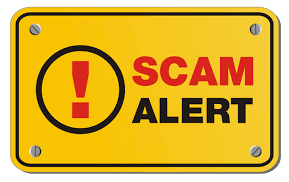Wisconsin News
Scam Spotlight: Old School Letter Mailing Scams are New Again

Scammers often use the latest technologies to steal from consumers, but they also still rely on old, tried-and-true tactics. While being mindful of newer (often digital) scam methods is important, consumers also have to remain vigilant that ‘old school’ scam methods are still in use. Recent examples reported to DATCP involved consumers receiving fraudulent letters in their mailbox.
One letter claimed to come from a Canadian law firm, and stated that the Wisconsin-based recipient was eligible to claim a stranger’s life insurance policy worth almost $10 million. The reason given was that the original policy holder had no other relatives or beneficiaries, but shared a last name with the Wisconsin consumer and was possibly a distant relative. The letter was addressed directly to the consumer using their correct name, and was printed on official-looking letterhead. The law firm asked for 10% of the money – over $980,000 – in order to process the claim.
Another letter was sent to a consumer from a scammer impersonating Medicare. The sender threatened the consumer, who would soon be turning 65, with penalty fees for enrolling in Medicare past a deadline. The letter offered “helpful” tips, information, and resources. It provided a fake website and phone number if the consumer had any questions. Finally, it included a fake enrollment registration form to be filled out and sent back to the scammer, which asked for personal information.
If consumers receive an unsolicited letter that offers or asks for money, threatens them with fees or other penalties, or requests personal information, they should do the following:
· Pause and talk to someone they trust. It is important to not act right away. Having a conversation with a friend, family member, or other trusted person about the letter might help a consumer realize it is a scam attempt.
· Research the sender. In many cases, scammers are not impersonating a real company – they are running a fake one.
o The letter from the fake Canadian law firm was found to be fake after the consumer searched for the company’s physical address online and learned it was not real.
· Learn more about scams. Many scams follow well-established templates. Knowing what scams are common can help consumers figure out whether a letter they have received is a scam.
It may not be possible for a consumer to fully prevent their mailing address or other personal information from reaching scammers, but some steps can be taken to reduce risk:
· Do not fill out random surveys or sweepstakes entry forms. Consumers cannot control where their information is sent or sold after it is submitted, and the personal information collected may eventually be acquired by a scammer.
· Exercise consumer opt-out rights. Financial institutions are required to notify consumers of their right to not have personal information shared with outside companies. To opt-out of mail offers of prescreened credit or insurance, consumers can visit OptOutPrescreen.com.
· Reduce unwanted mailings. Junk mail can be reduced either by writing to the companies sending it and telling them to stop, or by registering for the Direct Marketing Association’s (DMA) Mail Preference Service (MPS). Registering for 10 years costs $2 when registering online at DMAchoice.org, or $3 by mail.


